Filter by
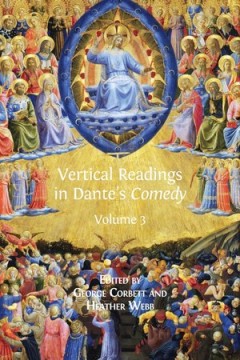
Vertical Readings in Dante's 'Comedy': Volume 3
Vertical Readings in Dante’s Comedy is a reappraisal of the poem by an international team of thirty-four scholars. Each vertical reading analyses three same-numbered cantos from the three canticles: Inferno i, Purgatorio i and Paradiso i; Inferno ii, Purgatorio ii and Paradiso ii; etc. Although scholars have suggested before that there are correspondences between same-numbered cantos that beg…
- Edition
- -
- ISBN/ISSN
- 9781783743605
- Collation
- -
- Series Title
- -
- Call Number
- -
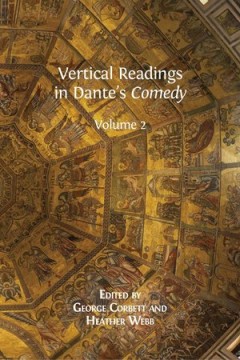
Vertical Readings in Dante's 'Comedy': Volume 2
Vertical Readings in Dante’s Comedy is a reappraisal of the poem by an international team of thirty-four scholars. Each vertical reading analyses three same-numbered cantos from the three canticles: Inferno i, Purgatorio i and Paradiso i; Inferno ii, Purgatorio ii and Paradiso ii; etc. Although scholars have suggested before that there are correspondences between same-numbered cantos that beg…
- Edition
- -
- ISBN/ISSN
- 9781783742554
- Collation
- -
- Series Title
- -
- Call Number
- -
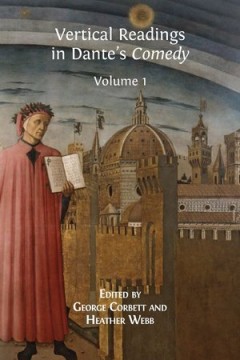
Vertical Readings in Dante's Comedy: Volume 1
Vertical Readings in Dante’s Comedy is a reappraisal of the poem by an international team of thirty-four scholars. Each vertical reading analyses three same-numbered cantos from the three canticles: Inferno i, Purgatorio i and Paradiso i; Inferno ii, Purgatorio ii and Paradiso ii; etc. Although scholars have suggested before that there are correspondences between same-numbered cantos that beg…
- Edition
- -
- ISBN/ISSN
- 9781783741748
- Collation
- -
- Series Title
- -
- Call Number
- -
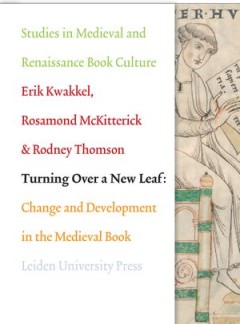
Turning over a New Leaf
Books before print – manuscripts – were modified continuously throughout the medieval period. Focusing on the ninth and twelfth centuries, this volume explores such material changes as well as the varying circumstances under which handwritten books were produced, used and collected. An important theme is the relationship between the physical book and its users. Can we reflect on reading pra…
- Edition
- -
- ISBN/ISSN
- 9789087281557
- Collation
- -
- Series Title
- -
- Call Number
- -
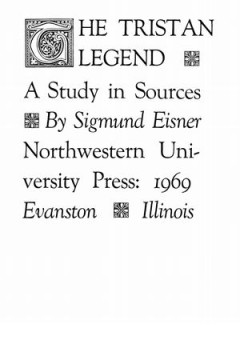
The Tristan Legend: A Study in Sources
Tristan und Isolde (Tristan and Iseult) remains one of the most popular romances ever written. Although the tale was believed to have originated in Germany, bards in France and Britain composed their own versions of the story, a tale of adultery, betrayal, mistaken identity, and thwarted love. In The Tristan Legend, Sigmund Eisner offers a study of the sources of the Tristan romance, tracing th…
- Edition
- -
- ISBN/ISSN
- 9780810138353
- Collation
- -
- Series Title
- -
- Call Number
- -

The Retro-Futurism of Cuteness
Is it possible to conceive of a Hello Kitty Middle Ages or a Tickle Me Elmo Renaissance? The Oxford English Dictionary dates the first reference to “cute” in the sense of “attractive, pretty, charming” to 1834. More recently, Sianne Ngai has offered a critical overview of the cuteness of the twentieth-century avant-garde within the context of consumer culture. But if cuteness can get un…
- Edition
- -
- ISBN/ISSN
- 9781947447288
- Collation
- -
- Series Title
- -
- Call Number
- -
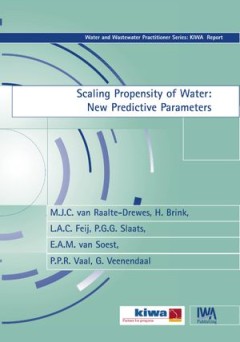
Posthuman Lear: Reading Shakespeare in the Anthropocene
Approaching King Lear from an eco-materialist perspective, Posthuman Lear examines how the shift in Shakespeare’s tragedy from court to stormy heath activates a different sense of language as tool-being — from that of participating in the flourish of aristocratic prodigality and circumstance, to that of survival and pondering one’s interdependence with a denuded world. Dionne frames the t…
- Edition
- -
- ISBN/ISSN
- 9780692641576
- Collation
- -
- Series Title
- -
- Call Number
- -

The Poems of Aimeric de Peguilhan
Poems of Aimeric de Peguilhan is the first critical, annotated translation in English of the collected work of poet Aimeric de Peguilhan. In it, William P. Shepard and Frank M. Chambers provide translations and introductory material to the work of the medieval French troubadour.
- Edition
- -
- ISBN/ISSN
- 9780810138698
- Collation
- -
- Series Title
- -
- Call Number
- -

Our Mythical Childhood...: The Classics and Literature for Children and Young…
This volume offers a survey of the reception of Classical Antiquity in the literature for youngsters by applying regional perspectives from East-Central and Western Europe, Africa, Israel, Japan, New Zealand, Russia, and the United States. The title Our Mythical Childhood hints at the elusive and paradoxical potential of the ancient tradition that is both a fixed base shared by many people worl…
- Edition
- -
- ISBN/ISSN
- 9789004335370
- Collation
- -
- Series Title
- -
- Call Number
- -

The Fulfillment of the Scriptures: Abraham, Moses, and Piers
Ruth M. Ames’s The Fulfillment of Scriptures approaches Langland’s key medieval text, Piers Plowman, using critical literary methods developed in interdisciplinary programs that explore the intersections of religion and literature. Ames draws on the history of the development of Christian doctrine as she explores the ways that the allegory of Piers parallels the story of Jesus in Christian …
- Edition
- -
- ISBN/ISSN
- 9780810138216
- Collation
- -
- Series Title
- -
- Call Number
- -
 Computer Science, Information & General Works
Computer Science, Information & General Works  Philosophy & Psychology
Philosophy & Psychology  Religion
Religion  Social Sciences
Social Sciences  Language
Language  Pure Science
Pure Science  Applied Sciences
Applied Sciences  Art & Recreation
Art & Recreation  Literature
Literature  History & Geography
History & Geography